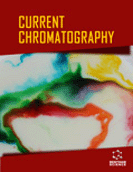Abstract
Background: Linear alkanes, between nC5 and nC9, and aromatic hydrocarbons, also called BTX (benzene, toluene, xylenes are important constituents of raw materials in the petroleum and chemical industries. Their separation is relevant for both industrial and analytical point of views. Industrial separation and purification involve the use of appropriate molecular sieve materials.
Methods: The separation of linear alkanes (nC5-nC9), and benzene, toluene and o-xylene, also called BTX, by using two inorganic polymers based on tetraethoxysilane (TEOS) as stationary phase was evaluated from inverse gas chromatography data. Both materials were able to separate the mixtures of those organic volatile hydrocarbons. The nature of such behavior is discussed according to the possible guest-host interactions of the molecules adsorption and retention in the chromatographic column.
Results: The retention times were obtained from the recorded chromatographic profiles and then used to obtain differential adsorption heats and separation coefficients. The adsorption heats were estimated for each probe molecule from the slopes of the straight lines at four temperatures. The effects of these surface differences on the molecules adsorption and separation are discussed.
Conclusion: The main difference between the two studied materials is the percentage of water on their surface due to the synthesis conditions. This fact modulates the pore accessibility and the adsorption interactions for BTX probe molecules but not for linear alkanes adsorption.
Keywords: Hydrocarbons adsorption, hydrocarbons separation, inverse gas chromatography, TEOS polymers.
 31
31 2
2

















